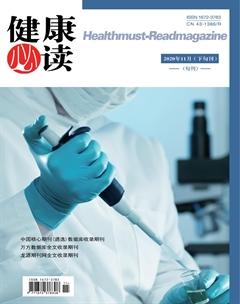分階段護理干預在老年血液透析患者動靜脈內瘺成形術中的應用
劉少平 易海飛 溫足珍


【摘 要】目的:研究分階段護理干預在老年血液透析患者動靜脈內瘺成形術中的應用。方法:從2019年7月-2020年7月期間本院進行動靜脈內瘺成形術的老年血液透析患者中抽取92例展開研究,采用雙盲法進行分組,參比組患者采用常規護理干預,試驗組患者采用分階段護理干預,對比兩組患者護理后的抑郁程度、焦慮程度、護理滿意度以及并發癥發生情況。結果:在對進行動靜脈內瘺成形術的老年血液透析患者護理后,試驗組患者的抑郁程度(30.25±3.81)分、焦慮程度(31.92±3.53)分和護理滿意度89.13%均好于參比組,且并發癥發生情況較少(P<0.05),對比有意義。結論:在對進行動靜脈內瘺成形術的老年血液透析患者護理時,不同的護理干預產生的效果不同,分階段護理干預能夠改善患者的心理健康狀況,提高護理滿意度,減少并發癥的發生,值得推廣。
【關鍵詞】:分階段護理;老年血液患者;動靜脈內瘺成形術;護理滿意度
Abstract: ?Objective: To study the application of staged nursing intervention in arteriovenous fistula plasty in elderly hemodialysis patients. Methods: from July 2019 to July 2020, 92 elderly hemodialysis patients who underwent arteriovenous fistula plasty in our hospital were selected and divided into two groups by double-blind method. The patients in the reference group were given routine nursing intervention, and the patients in the experimental group were given staged nursing intervention. The depression degree, anxiety degree, nursing satisfaction and complications of the two groups were compared Situation. Results: after nursing the elderly hemodialysis patients with arteriovenous fistula plasty, the depression degree (30.25 ± 3.81) points, anxiety degree (31.92 ± 3.53) points and nursing satisfaction of 89.13% in the experimental group were better than those in the reference group, and the incidence of complications was less (P < 0.05). Conclusion: different nursing interventions have different effects on elderly hemodialysis patients undergoing arteriovenous fistula plasty. Phased nursing intervention can improve the mental health status of patients, improve nursing satisfaction and reduce the occurrence of complications, which is worthy of promotion.
Key words: phased nursing; elderly patients with blood; arteriovenous fistula plasty; nursing satisfaction
【中圖分類號】R473.6【文獻標識碼】A【文章編號】1672-3783(2020)11-33--01
血液透析(HD)是指將血液引流到體外,經過一系列的凈化過程,將血液凈化并回輸體內的過程。動靜脈內瘺成形術是形成體外循環的關鍵步驟。老年人患者隨著年齡增長,身體素質明顯下降,對治療過程懷有忐忑心理,容易影響治療,造成術后并發癥,不利于術后恢復,故進行合適的輔助護理是十分必要的。但常規護理已經不能夠滿足治療需求,所以,需要尋找更科學的護理干預,調整患者的心態,提高治療效果[1-3]。本研究對分階段護理干預在老年血液透析患者動靜脈內瘺成形術中的應用進行闡述。
1 資料與方法
1.1 一般資料
隨機選取在2019年7月-2020年7月期間于我院進行動靜脈內瘺成形術的92例老年血液透析患者,作為本次實驗的研究對象。采用雙盲法分為試驗組、參比組(n=46例),試驗組患者男性26例,女性20例;年齡60~81歲,平均年齡(70.36±3.91)歲。參比組患者男性25例,女性21例;年齡61~82歲,平均年齡(71.22±3.64)歲。試驗組患者與參比組患者的一般資料差異不大,具有可比性。
1.2 護理方法
參比組老年血液透析患者采用常規護理干預,包括為患者調整體位,普及基本知識,進行相關檢查,密切關注患者各項生命指標,進行輸液護理等。試驗組老年血液透析患者采用分階段護理干預,詳細如下:第一階段,為老年患者介紹血液透析的知識。相關人員應該根據患者的文化水平,將復雜難懂的疾病專業術語轉換成通俗易懂的話語為其講解,提高患者的疾病認知,并囑咐患者注意事項,提高自我約束性,更好的進行治療。此外,護理人員應該與患者進行溝通,講解成功案例,鼓勵患者,樹立自信心,積極配合臨床治療。注意保護患者術肢,不可通過此處輸液。第二階段,為患者進行用藥指導和相關護理。護理人員應在術后及時告知患者手術情況,減少患者顧慮;為患者調整為平臥位的體位24h;嚴格遵循醫囑對患者進行用藥,抗生素、抗凝藥物等需要嚴格把控,還可使用熱毛巾熱敷術肢,減輕患者術后腫脹;密切關注患者內瘺是否通暢以及是否出現術后不良反應。第三階段,在術后2周后,護理人員可以指導患者進行合適的康復訓練,如讓患者的術肢進行握拳、松拳等動作。第四階段,進行相應的持續治療。護理人員應該囑咐患者按時用藥,告知患者持續治療的重要性,注意保護術肢,對內瘺進行科學管理,提高自我監測能力,定期進行復查。

